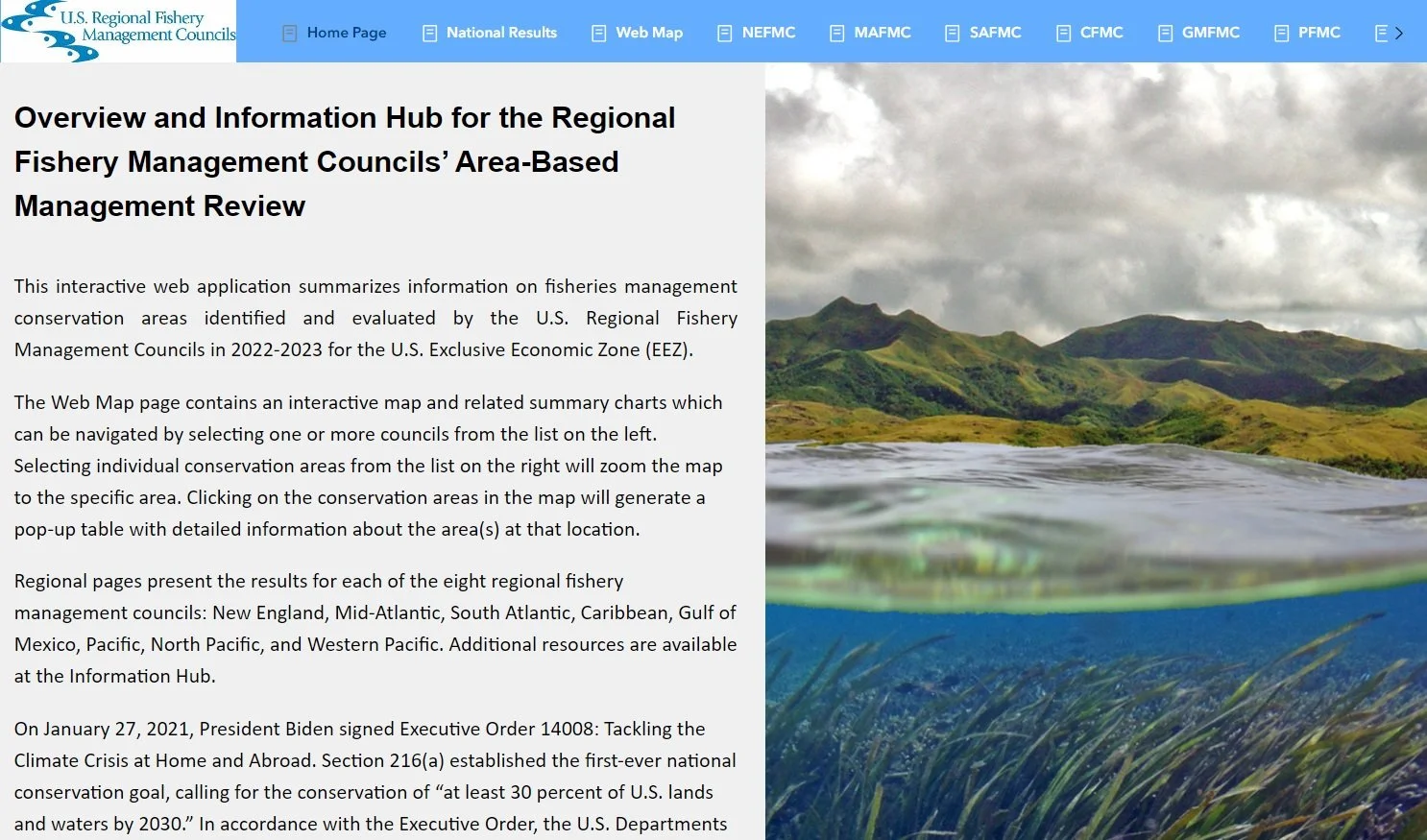Area-Based Management
On January 27, 2021, President Biden signed Executive Order 14008: Tackling the Climate Crisis at Home and Abroad. Section 216(a) of Executive Order 14008 established the first-ever national conservation goal, calling for the conservation of “at least 30 percent of U.S. lands and waters by 2030.” In accordance with Executive Order 14008, the U.S. Departments of the Interior, Agriculture and Commerce, and the White House Council on Environmental Quality released the Conserving and Restoring America the Beautiful report on May 6, 2021. The report calls for the development of an Atlas to measure the progress of conservation, stewardship, and restoration efforts across the United States.
In May 2021, the Council Coordination Committee formed an Area-Based Management Subcommittee to assist with tracking and reacting to the 30 by 30 initiative and associated America the Beautiful (ATB) efforts.
Conservation Areas in the U.S. Exclusive Economic Zone (EEZ)
On behalf of the regional fishery management councils, the ABM Subcommittee developed a report that includes a comprehensive evaluation of all existing conservation areas in the U.S. EEZ, with the goal of recommending conservation areas for inclusion into the American Conservation and Stewardship Atlas. The Subcommittee’s final report and related resources are linked below.
Appendix B: Conservation Worksheet and Effectiveness Checklist by Region
To complement the report, the Subcommittee also developed an interactive web application and a web map. The application includes an interactive map and related summary charts. Regional pages present the results for each of the eight regional fishery management councils. You can download the data here.
Conservation Area Definition
For the purposes of this effort, the CCC ABM Subcommittee defined a conservation area as: 1) an established, geographically defined area, with 2) planned management or regulation of environmental adverse fishing activities, that 3) provides for the maintenance of biologically productivity and biodiversity, ecosystem function and services (including providing recreational opportunities and healthy, sustainable seafood to a diverse range of consumers).
Key Findings
Using the above definition, the CCC ABM Subcommittee reviewed the sites using a standard methodology across the U.S. and recommended three different categories based on the objectives for developing the conservation areas and whether the areas are implemented year-round or seasonally.
In total, the report identifies 648 conservation areas which cover greater than 72 percent of the total U.S. EEZ. Nearly a third of the U.S. EEZ includes prohibitions on all mobile bottom tending gears, with prohibitions on bottom trawling in about half of the EEZ. There are also additional areas conserved under differing levels of prohibitions and restrictions on fishing activity and other management measures. This means a large portion of the U.S. EEZ is conserved relative to environmentally adverse fishing activities.




Pros and Cons of Area-Based Approaches
The ABM Subcommittee’s report on conservation areas in the U.S. EEZ also included an evaluation of pros and cons of area-based approaches. Several highlights from the report are provided below.
There is much more to conserving marine biodiversity than just quantifying the total amount of sub areas that have been established to provide additional conservation, especially under a changing climate. Limits on the harvest of fish species -- and the conservation of fish habitat, marine mammals, and endangered species -- in 100% of the EEZ under the Councils’/NOAA Fisheries jurisdiction provides for the conservation of marine biodiversity far beyond what can be achieved through the conservation of just a portion of the ocean.
The biggest long-term threats to marine biodiversity in the U.S. are a warming ocean, increasing ocean acidity, invasive species, overexploitation, and pollution from land runoff (Fautin et al. 2010). Conservation areas will not be an effective tool to protect biodiversity or increase resilience to climate change in the face of these threats. Addressing these problems will require reduced carbon emissions and other environmental stressors on a global scale, and a flexible regional approach to adaptively manage and mitigate direct and indirect human impacts on marine ecosystems.
The Councils have a tremendously diverse range of effective and innovative management tools that support biological productivity and biodiversity, ecosystem function and services (including providing recreational opportunities and healthy, sustainable seafood to a diverse range of consumers). The most effective means to address fisheries conservation challenges today and in the future is continued development of effective fisheries management measures through the MSA and the Council/NOAA Fisheries collaborative process.
The Council process is in clear alignment with the ATB principles. In fact, through this process of reviewing evaluation criteria, the CCC ABM Subcommittee discovered that some types of conservation areas, such as national marine monuments, appear to be less consistent with ATB principles when compared to areas developed by the Councils. The Councils employ a highly engaging and regionalized process during the development of management measures, including conservation areas and their boundaries. The Councils use best available science and can adapt those boundaries to meet emerging conservation challenges. The Councils are also equipped to make decisions with respect to the tradeoffs that occur around fishing access and enhanced opportunities for fishing communities, the public, and the benefits to the nation.



